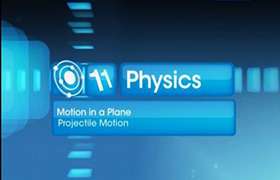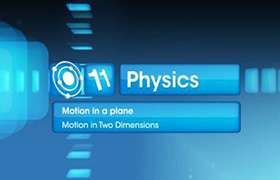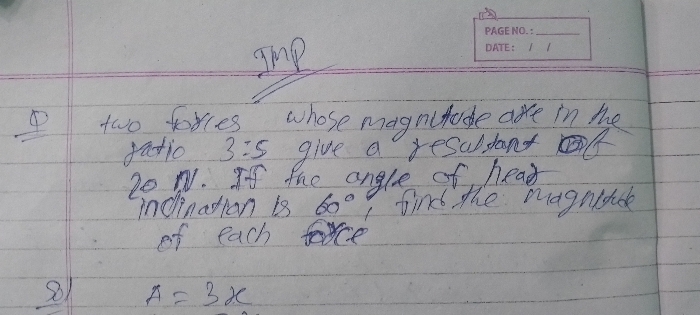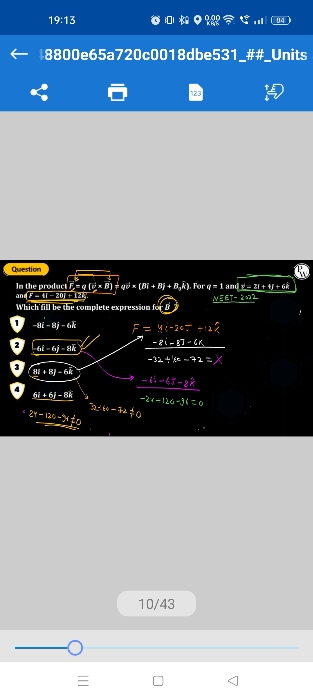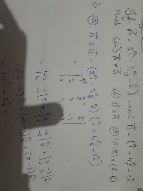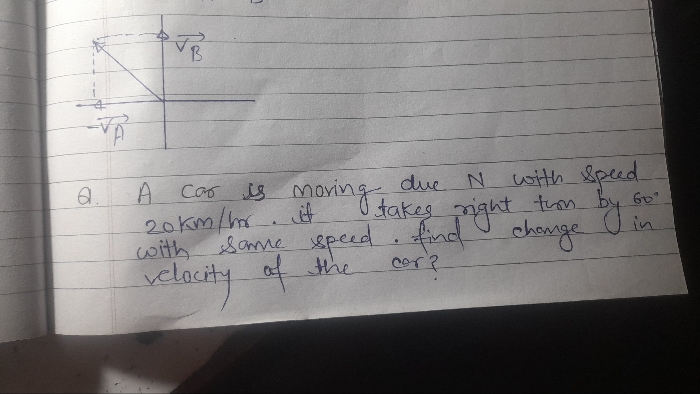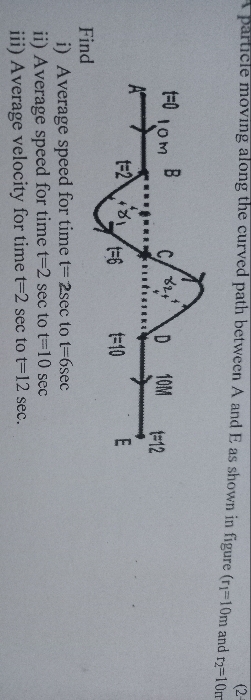CBSE Class 11-science Answered
could u plz xpln : Galileo's law of odd numbers .
Asked by shuchi.saumya | 08 Aug, 2010, 12:00: AM
Let's cosider a freely falling body and time intervals of 1 sec.
The distance travelled in first interval i.e 1 sec = 1/2 (10) (12) = 5 m
The distance travelled in second interval i.e. between 2nd second, = distance travelled in 2 seconds - distance travelled in 1st second = 1/2 (10)(4) - 5 = 15 m
Hence we can calculate distance travelled in successive intervals.
Now let's try considering ratio of distances in successive intervals, i.e. 15/5 = 3
Similarly if we proceed and find ratio of distance travelled in 3rd second and 2nd second, we'll get 5.
This is summarized by Galileo's law of odd numbers,
The distances travelled during equal intervals of time, by a body freely falling from rest, stand to one another in the same ratio as the odd numbers begining with unity.
Regards,
Team,
TopperLearning.
Answered by | 08 Aug, 2010, 10:10: PM
Concept Videos
CBSE 11-science - Physics
Asked by roshnibudhrani88 | 23 Mar, 2024, 05:52: PM
CBSE 11-science - Physics
Asked by vinitdubey7735 | 14 Mar, 2024, 11:21: AM
CBSE 11-science - Physics
Asked by shailajakandikatla19 | 18 Jan, 2024, 06:40: PM
CBSE 11-science - Physics
Asked by dhanshreekansyakar | 09 Jan, 2024, 11:57: AM
CBSE 11-science - Physics
Asked by banhisikhapanda49 | 07 Nov, 2023, 10:42: PM
CBSE 11-science - Physics
in a vertical circle of radius r at what point in its path a particle may have tension equal to zero
Asked by momintaufik26 | 13 Oct, 2023, 08:26: PM
CBSE 11-science - Physics
Asked by anshujaiswalname | 10 Sep, 2023, 01:29: PM
CBSE 11-science - Physics
Asked by subhashreeojha235 | 20 Jul, 2023, 11:22: AM
CBSE 11-science - Physics
Asked by preethiprithivi05 | 21 Feb, 2023, 09:28: PM
CBSE 11-science - Physics
Asked by hy9022075 | 11 Jan, 2023, 05:06: PM

